
One thing that appears obvious to us after more than 10 years of working with the various solutions that can be used on Mac and Windows to decompress video is that not all solutions are equal.
We believe that our users should be able to play almost any kind of media with the ArKaos software and at the same time we do everything a team of developer can to get the best performance on the platforms supported.
Practically the ArKaos software can play media files through the following decoders: QuickTime, FFmpeg, the Flash plugin, Quartz Composer and Windows Media Player. Currently (December 2009) we don’t allow the user to decide through which solution a media will be decoded, instead we try to make the best decision based on our many years of experience and tests. In the case where several video codecs (such as Mpeg4) can be played through different decoders like QuickTime, FFmpeg and Windows Media Player, we always prefer, no matter the platform, to first try to handle those codecs with FFmpeg as we have always had the best results with FFmpeg during our tests, and here’s why..
The other solutions..
Of course, on the Mac we could stick to QuickTime.. But sadly it appears that QuickTime has become almost obsolete today and is just used to decompress the codecs needed by the iPods. Most codecs are not properly multi threaded in QuickTime and this is a big problem for us. With GrandVJ or MediaMaster taking advantage of multi core machines by using each core separately to decompress the video layers you are mixing, it’s too bad to miss that great improvement by playing videos that absolutely need the QuickTime support.
On the PC we could be using Windows Media Player, it is a wonderful technology but it’s architecture is completely incompatible with the sophisticated engine we use to allow frame blending and frame prediction in the latest version of GrandVJ and MediaMaster.
Flash animations and Quartz Compositions, of course, are unique in the sense that they can only be read by their own dedicated player.
As you now understand, once you open a media file in ArKaos your content can go through various roads and it’s important to consider that. To get the most out of GrandVJ or MediaMaster, benefit from the advantages of multi threading and perform frame blending you should make sure that your content is always played through FFmpeg.

How does ArKaos process the movie file?
On the Windows platform it’s pretty easy because the software first tries to play a file with the FFmpeg player and then falls back to the others (Windows Media Player or QuickTime) if needed.
But things get harder with the Mac platform because some files that could be played by FFmpeg may be rejected and fall back to QuickTime just because they have not been saved the correctly. Many QuickTime files have been created in a way that make them compatible with Mac OS X but also it’s ancestors Mac OS 9 and 8 and 7 and… Those files make use of what is called a Resource Fork.
To make it short, when Apple introduced the Macintosh years ago they decided that a single file would in fact be two files: the data file itself and an optional resource file. Many software have been using that Resource Fork to store additional data and information. This is now a problem for many .mov files that were created in the past and even still today with some applications that were born under the Mac OS 9 era and still generate QuickTime .mov files that have a Resource Fork.
This is quiet an issue for us because when the FFmpeg decoder can’t handle those files and makes ArKaos fall back to QuickTime, you end with QuickTime’s very bad multi core support even for very common codecs such as Photo JPEG. Another bad side effect of this Resource Fork is that most of the time when you will copy a movie file that has a Resource Fork to a Windows or Linux machine it will simply not be readable anymore because that tiny bit of information contained in the Resource Fork is not read on other platforms although it is vital to play the content.
How to get rid of the Resource Fork?
Thankfully it’s very easy to remove that annoying Resource Fork from a QuickTime file. You can simply open the file in today’s QuickTime player and do a “Save As”, QuickTime will reprocess the file correctly. The process is called “flattening” a movie file, it is very fast and will not re-compress your movie, this is very important to avoid re-compressing when possible.
Open your file in QuickTime and go to File, Save As..
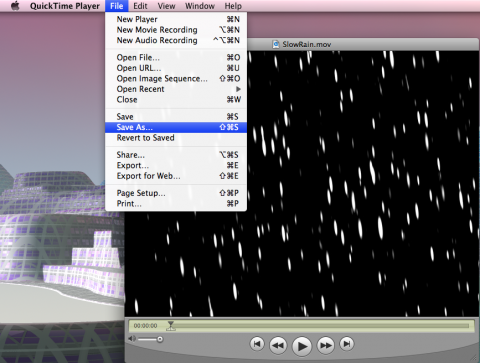
.. and enter a new name
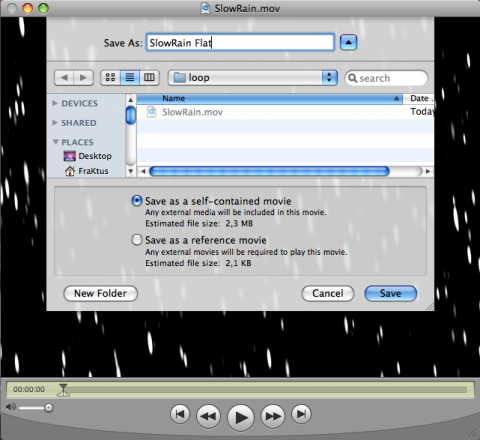
Of course, you will only need to do that if your file was created on a Mac, the free version of the QuickTime player is enough to do this and it works on all Mac OS X versions up to Snow Leopard with the latest QuickTime player. Now if you have lots of movie files to convert, you can of course look for some professional software that can queue and “flatten” a bunch of files from a directory.
FYI, here is a QuickTime file that has a Resource Fork (moov), inspected with a programming utility called Resorcerer:
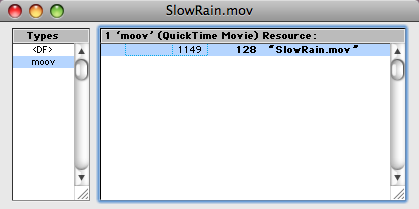
And here is the same file that has been flattened:
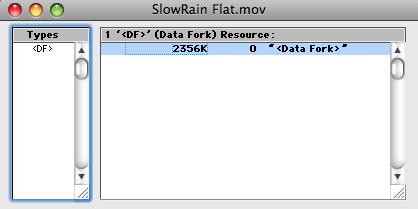
How do I know what decoder is used?
In GrandVJ it’s very easy to see what player is used by the ArKaos engine when processing a file; simply hover your mouse over the cell that contains the video and the contextual help appears.
In this one, the video file with a resource fork will be played through QuickTime:
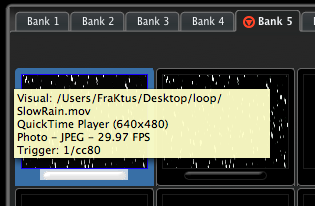
In this one, the same video flattened with the QuickTime player will go through the FFmpeg path:
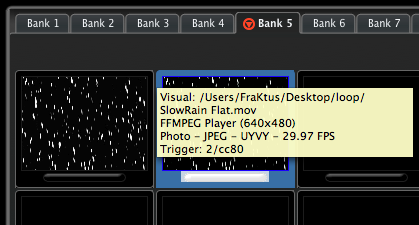
(The same information is also available in GrandVJ for each movie listed in the visual library and in MediaMaster you can get that information from the file library window.)
Conclusion
During the first days of the release of GrandVJ 1.2 beta 3 with the new audio engine (which relies on FFmpeg) some users have complained that some old .mov files were not playing audio correctly with the beta version, this was most of the time caused by the Resource Fork and flattening the files fixed the problem. As a bonus, it will make your files cross platform.
This should give you some lights on what is happening when you drop a file on GrandVJ or MediaMaster, as you can see a lot of work is being done under the hood :)

